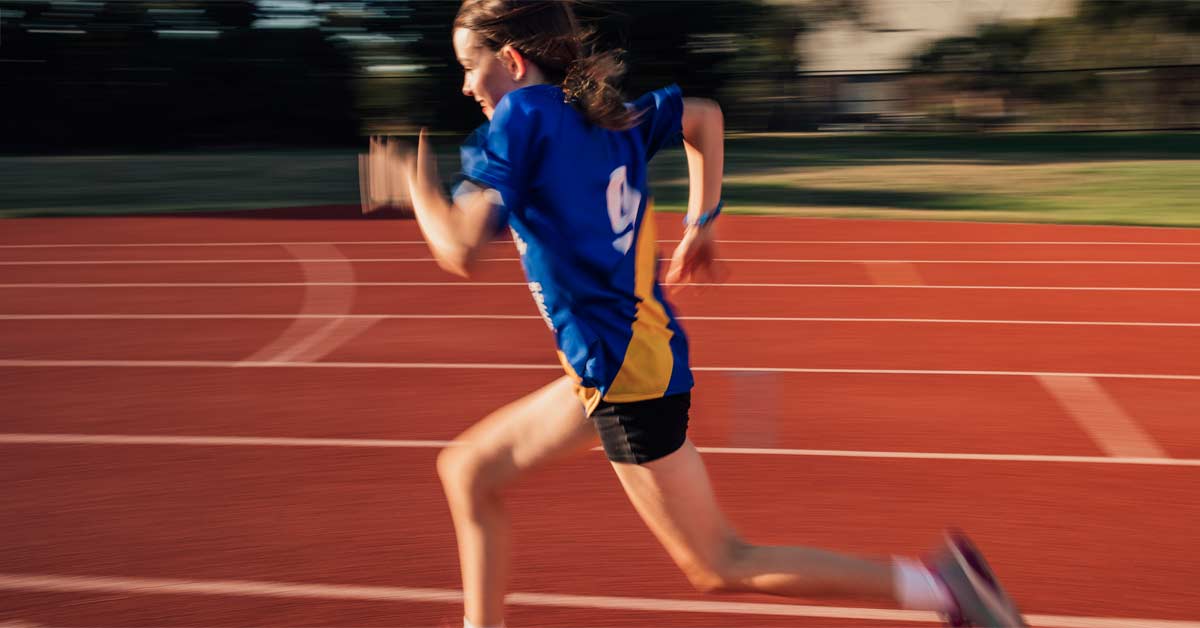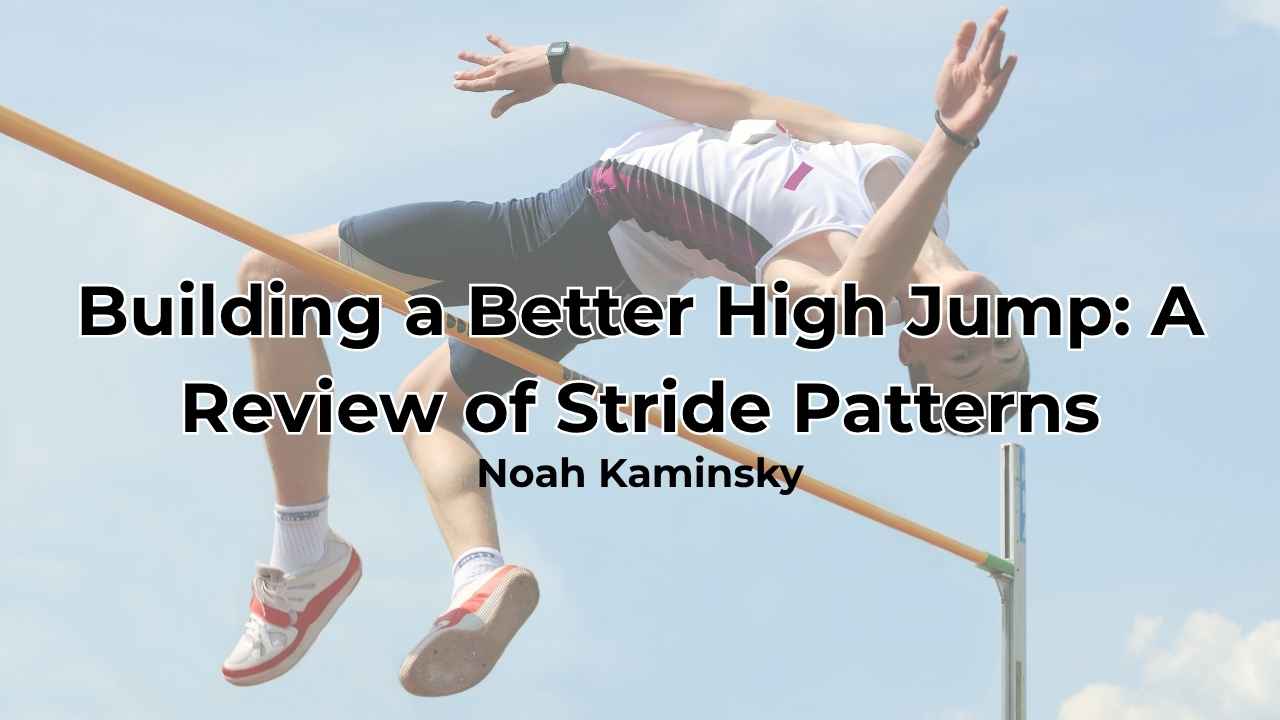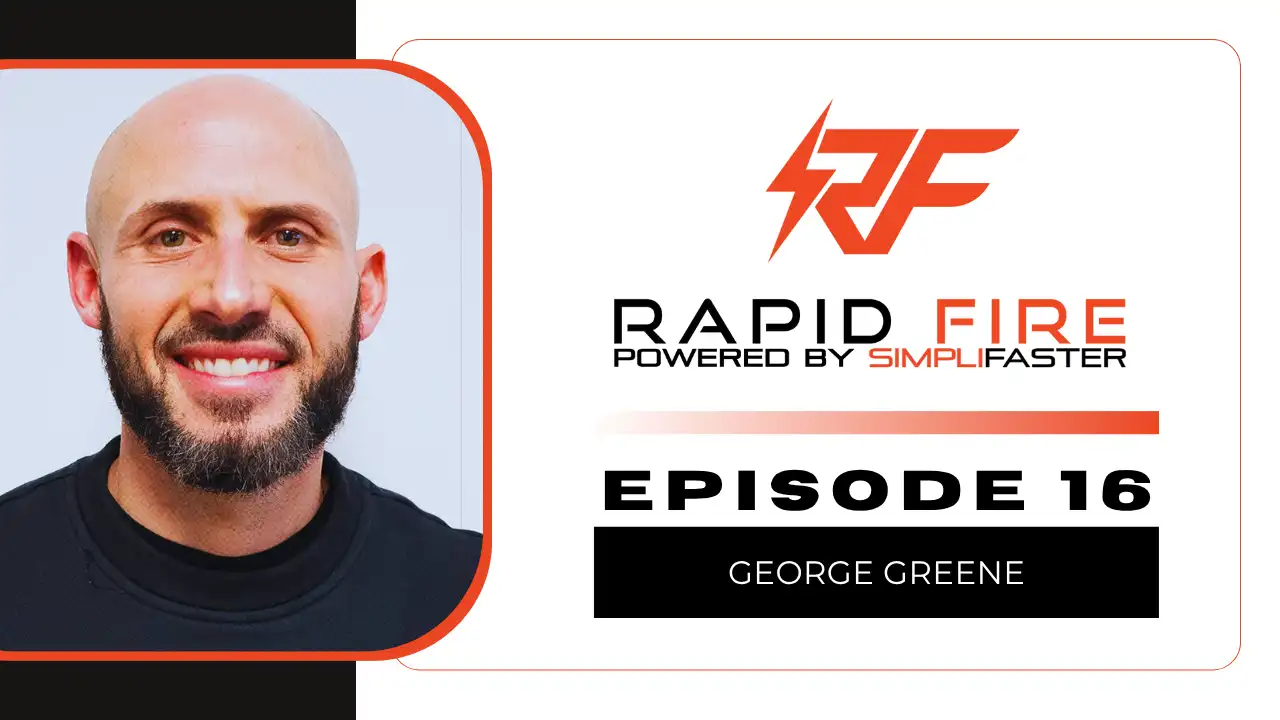Training in the private sector of sports performance exposes coaches to athletes in every age range. This comes as a surprise to no one; however, it can reveal a coach’s biases that can negatively affect certain segments of that age spectrum.
Having spent most of my time coaching in college athletics, working with younger athletes (middle and high school) wasn’t something I was accustomed to. As Coach Matt Tometz spoke about previously, I’ve quickly found out that youth athletes are not small adults. Treating and training them as such is more detrimental than it is elevating—in every sense, but in this context specifically, with regard to speed development.
Oftentimes, we hear coaches talk about the need for sprinters to be able to produce high levels of force. Force and strength are highly important to speed. Want to run faster? Train to produce higher amounts of force.
There is an amount of truth to this thought process: the ability to produce force is important. What happens to this foundational truth of speed development, however, when the athlete you are training is 13 years old? Is their ability to run faster still predicated on their ability to produce force? Not many 13-year-olds in the Chicago area have reached the strength level that many of these coaches say is a prerequisite to running fast. It seems that if force cannot be the differentiating factor in speed development, we have to search for answers elsewhere.
Therefore, every other corner of speed development must be explored before turning to force output: stride frequency (thigh velocity), ankle stiffness, rhythm and timing, the direction of force application, etc. All of these factors are more important qualities when training a younger athlete compared to total force output. Their ability to produce force will grow as they do. Now, if their ability to produce force grows in conjunction with their ability to orient their limbs through space quickly and in a coordinated fashion, then the application of that force will help.
A Missing Piece
Speed development for high-performance athletes can mirror that of the youth model to an interesting extent. Typically, when a collegiate athlete walks into our facility for the first time, it is on the back end of a collegiate career, and they are looking to continue playing at the next level (such as college football players coming to train for their Pro Days or soccer players with contracts to play overseas). One of the things that stands out about these athletes is a lack of the same qualities that we hammer away at with the younger population.
Many of these college/post-collegiate athletes are coming in after three or four (sometimes five-plus) years of training in college S&C programs that emphasized their ability to produce maximal force and deemphasized the qualities we try to capture with our youth athletes.
It seems that qualities like stiffness, frequency, rhythm and timing, etc. fall out of the athletic spectrum once strength and force output become an overriding emphasis of training. Share on XTo be clear, this is not an article on college S&C versus private sector performance. This is a review of the training qualities I’ve noticed as I’ve interacted with athletes of many ages and abilities. However, it seems that the qualities we have already talked about—stiffness, frequency, rhythm and timing, etc.—are the qualities that fall out of the athletic spectrum once strength and force output become an overriding emphasis of training.
While youth athletes are unable to rely on their limited ability to produce force for their speed development, the inverse is true for high-performance athletes. The force component has been trained SO much that it is relied on completely to “muscle” through speed workouts. To paint a mental picture of what this type of runner may look like: think strained, pulling, not bouncy off the ground, legs moving in slow motion, etc. (Not to say that it’s impossible to “muscle” your way to a fast run—it certainly is.) With many older athletes coming in at this point of training, the “non-force stuff” becomes an integral part of their training.
Of course, the ability to produce force is not completely ignored. Again, it is important. However, rarely have I found that the reason a high-level athlete is not fast is because they are not strong enough. They are, typically, plenty strong. They fall short because their ankles collapse on ground contact, their thigh velocity is slow, their rhythm in sprinting is awkward, and they fail to apply their strength in the right direction.
Recognizing problems is valuable, but solving problems is significantly more so. Here are five of the most common ways that I try and rectify the “not enough of anything except for force” situation:
1. Ankle Stiffness Variations
Video 1. A few common ankle-jump variations for building ankle stiffness: angled (light prowler in front to help maintain angle), forward and backward, alternating single leg. Ankle stiffness supports every phase of sprinting!
Interestingly, one of the populations of youth athletes that do come in physically prepared to sprint is basketball players. The stiffness and spring in their lower bodies compared to, say, their baseball counterparts is striking. Obviously, they need coaching on the technical aspects of sprinting, but physically, they have qualities that sprint coaches desire. Trying to build that spring in other athletes is a necessity. Unfortunately, years of bilateral strength work tend to loosen those springs.
2. A-Run Variations
Video 2. Two examples of the many possibilities of A-runs: banded in place A-run and ascending A-run.
3. A-Switch Variations
Video 3. A-switches have a near-infinite number of possibilities. Demonstrated here are an in-place A-switch, double A-switch, triple A-switch, and triple A-switch with bounce.
Getting the lower body to move quickly is a quality that is, again, built into “springier” athletes. Thigh velocity is an essential part of sprinting. Often, one of the issues for athletes with long training histories in the weight room is their inability to quickly “switch” the position of their legs while running.
A-switch and A-run variations are great tools for youth athletes because the drills train their ability to coordinate high-speed limb movements quickly and consciously. This is a great challenge for youth athletes, especially as they fight the awkwardness that puberty can bring. While higher-level athletes are not fighting the battles of puberty, we do want them to re-establish an emphasis on thigh velocity that may have been lost over the previous few years.
4. Single Leg Hurdle Step-Over Drill
Video 4. Progression used for single leg stepovers: walking single leg with hurdles, shuffling single leg with hurdles, shuffling single leg (no hurdles), shuffling single leg to bleed out.
5. Bounding Variations
Video 5. Again, there are many variations of bounding. Here are two I commonly use: sled bound and speed bound.
How do you objectively measure rhythm? It’s difficult. Still, I would venture to say that most coaches would agree that it’s important. Have you ever seen an athlete try to bound and then start to skip—or an athlete try to skip and then start bounding? Was that athlete fast? Probably not. Lack of rhythm? Maybe. Similar to the rest of this article—the athletes who tend to struggle with that rhythm are typically the more “force-driven” group.
Variations of all these drills are commonplace in our speed development workouts from youth through professional (of course, this is just a sample of those drills). None of them have any emphasis on higher force production.
It’s a Balancing Act
High-level athletes are high-level athletes for a reason. This seems obvious. Every successful athlete has physical qualities that make them successful. For some athletes, their ability to produce force sets them apart from their competitors. This, though, is not the superpower of every athlete.
The ability of some athletes to produce force sets them apart from their competitors, but this isn’t the superpower of every athlete. Many coaches are intent on training their athletes as if it is. Share on XIt seems that many coaches are intent on training all of their athletes as if it is. However, this training style can lead to adaptations that take away from the qualities that may make another, less force-dominant, athlete successful. It can act, instead, as their kryptonite. So, let’s lean into the superpowers of the athletes we work with (the qualities that make them fast!), and be mindful that not everyone is the same. Treating them as such is detrimental. Train a 13-year-old. See how well they do when you cue them to push the ground away further and harder (probably not well).
It’s interesting how funneled our thinking can get when we are only exposed to a specific population of athletes and how we create these truths about athletic development in our minds because every athlete we encounter comes from such a similar athletic playbook. But when one of those fundamental truths gets removed from the equation? How does that make you rethink the fundamental truths that no longer seem so fundamental?
Since you’re here…
…we have a small favor to ask. More people are reading SimpliFaster than ever, and each week we bring you compelling content from coaches, sport scientists, and physiotherapists who are devoted to building better athletes. Please take a moment to share the articles on social media, engage the authors with questions and comments below, and link to articles when appropriate if you have a blog or participate on forums of related topics. — SF





